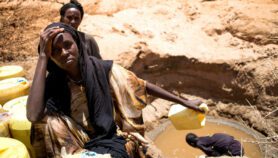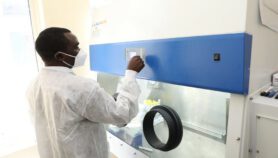By: Paula Leighton
Send to a friend
The details you provide on this page will not be used to send unsolicited email, and will not be sold to a 3rd party. See privacy policy.
[SANTIAGO] Scientists in Chile have identified bacteria that could allow the country to double the amount of copper it mines.
The Codelco corporation that runs Chile’s state-owned mines announced the news last week (25 September).
High-grade copper reserves are now scarce in Chile and the metal must be extracted from deep rock where it is bound to sulphates and impurities.
The bacteria can break the bonds between copper and sulphur, allowing the metal to be released.
They could be used to exploit low-grade copper ores in a way that is "cheaper, cleaner and more efficient than current techniques", said Ricardo Badilla, chief executive officer of Biosigma, the Codelco subsidiary that developed the technology.
Badilla told SciDev.Net that the technique could be in use by 2008, after it has been tested on an industrial scale.
"If everything goes as planned…we could double the mining deposits," he said.
Seven patents on the technology have been applied for in Chile and abroad.
Chile’s president Michelle Bachelet welcomed the development, saying that it shows that Chile has the capacity to do cutting edge biotechnology research.
This would allow the country to move on from being a mere producer of raw materials, she said.
BioSigma is a collaboration between Codelco and the Japanese company Nippon Mining & Metals.
US$10 million was spent over four years developing the technology. The project also involved Genoma Chile and the Centre for Mathematical Modelling at the University of Chile.
Link to related article by Badilla in the Electronic Journal of Biotechnology













